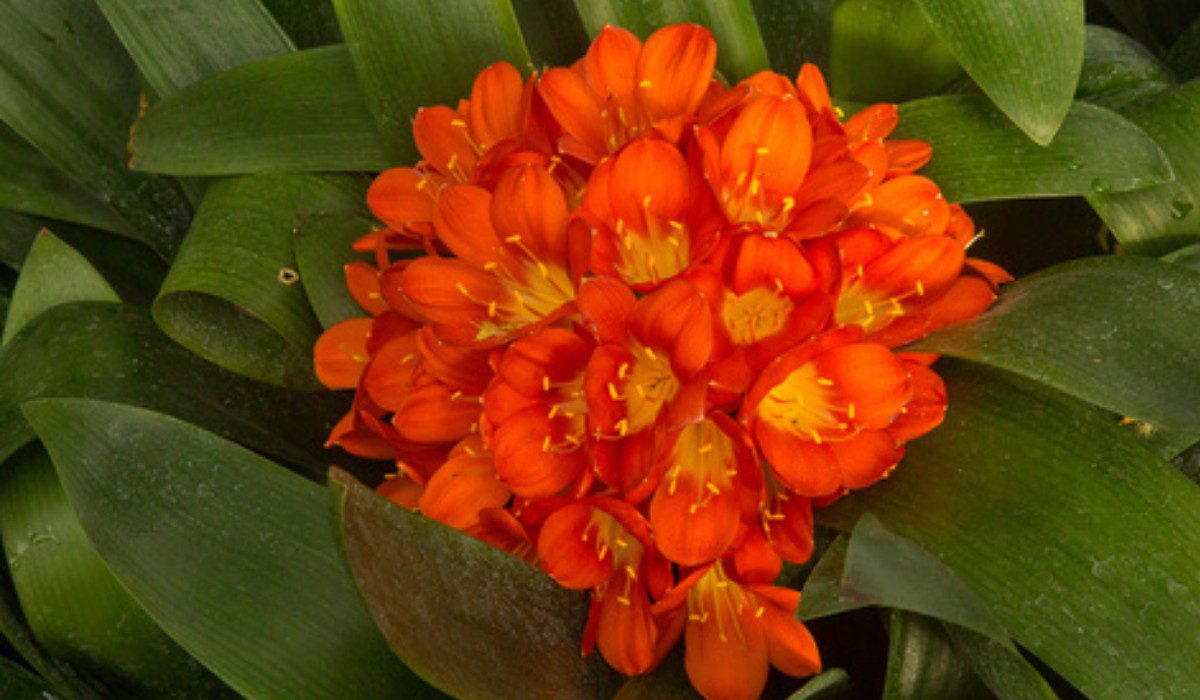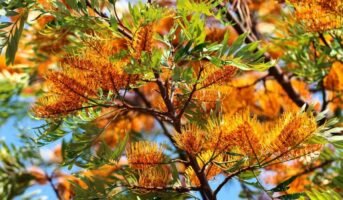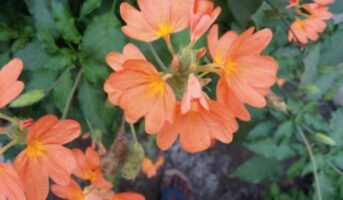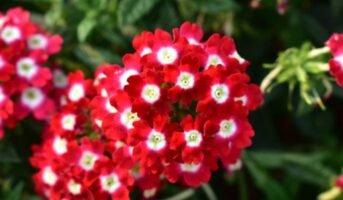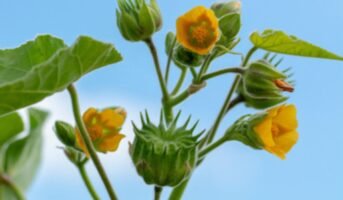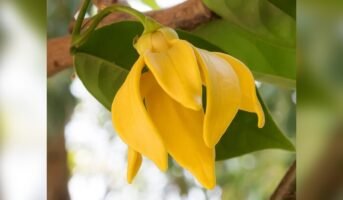What is Clivia Miniata?
Clivia miniata is a winter plant which blooms in orange clusters. Also known as Natal lily, Clivia Miniata is native to South Africa. These orange cluster flowers are also very popularly grown in China, Japan, US and New Zealand.
On a dreary winter day, a cluster of Clivias glowing in shades of orange, behind the protection of a tree, is a bright and beautiful sight. Clivia miniata, also known as kaffir lilies, produce plump clusters of 10-20 trumpet-shaped, iridescent flowers in the winter, making them ideal for a dry, dark part of your garden. All those vivid hues make your winter garden feel like you’ve stepped into the tropics. Crinum Asiaticum belongs to the same family as the Amaryllidaceae. Learn more about it.

Source: Pinterest
Clivia miniata: Key facts
| Common name | Kaffir lilies, natal lilies, bush lilies |
| Botanical name | Clivia miniata |
| Family | Amaryllidaceae |
| Height | 30-60 cm |
| Spread | 90 cm |
| Temperature | 50-75 ℉ |
| Water | Only water Clivia when soil is dry |
| Soil | Well-drained soil |
| Sun | Bright light (avoid direct sun) |
See also: Rose flower: 30+ images and over 20 interesting facts about the heavenly flower
Clivia miniata: Features
Clivia prefers spending time outdoors in the summer, undercover. It can reach a maximum height and breadth of 18 inches once fully developed. However, because of its slow growth, this may take two to five years.
When the Clivia is in full bloom (typically between spring and summer), it is a lovely plant with ten to twenty trumpet-shaped, orange-petaled flowers with a yellow centre. Red, yellow, and white are not the only colours available; nonetheless, they are by far the most popular.
The leaves have a broad, strap-like form and are quite dark green, and they arch over one another. The cluster of blooms is generated at the terminal of a stalk, so they are displayed above the foliage.
Clivia miniata: How to grow
Raising Clivia miniata from seeds
Big, bright red or yellow berries appear in early spring when flowering begins to wind down, depending on the variety. At that time, you can harvest the berries and peel away the flesh covering of the seeds before planting.
Press the seeds into a seed-raising mix or fine pine bark without burying them and apply a light fungicide solution. Seeds need about a month to germinate before they can be transplanted into larger containers.
You can also let the berries dry out on the plant until their skins wrinkle and the flesh becomes papery. Seeds should be washed in a fungicide and planted right away to prevent drying out.
It can take anywhere from three to five years to see it mature into a blooming plant. You should store it in a dark, well-ventilated, and relatively warm area. Fertilise once every two weeks and water deeply once a week during the spring and summer.
Propagation through offsets
Utilise the offsets that arise from the tangled roots for propagation. Carefully separate each offset at the place where it connects to the parent plant. Employ a lengthy, sharp knife. The optimal time to remove an offset is soon after the last blooms of the season have fallen, but not until the offsets have at least three leaves that are 20-25cm (8-10 inches) long.
Plant it in an 8-12 cm (3-5 inch) container containing a mixture of equal parts peat moss and gritty sand or perlite, and maintain it in medium light and warmth. Water it sparingly, just enough to moisten the potting mixture, but allow the top two-thirds to dry out between waterings. When roots develop on the surface of the potting mix, transfer the baby plant to a soil-based potting mix in a container one size larger and treat it as an adult Clivia miniata. It will typically bloom approximately one year after being separated from its parent plant.
Clivia Miniata care tips
Light
A Clivia plant requires indirect light. Direct sunlight scorches the foliage and destroys the blossoms. Clivias enjoy the outdoors in the summer as long as they are kept in the shade.
Temperature
Spring, summer, and early autumn temperatures between 65° and 70° F (18.3° and 21.1° C) are optimal for Clivia plants. When your Clivia plant is “resting” from November to February, the temperature should be between 50° and 55° F (10° and 12.8° C). A Clivia plant does not thrive in temperatures below 50 degrees Fahrenheit (10 degrees Celsius).
Soil
Use soil rich in peat moss and sand that drains quickly to prevent the roots of your Clivia plant from becoming soggy.
Watering
The soil should be watered often during the spring and summer months but only seldom during the fall and winter months. Do not allow water to pool in the tops of the leaves because this will promote mould growth. They thrive in cool, dry shades and produce more flowers as a result.
If you overwater your plants, the roots will rot. Put your pots on pot feet instead of a saucer. Plants thrive in terracotta containers because the material can absorb excess water. Fall is the time to cut back on watering, and watering should be stopped altogether throughout the winter. At the end of winter, when flower stalks emerge, you can restart watering. Do not mist-spray the leaves.
Fertiliser
Once a Clivia plant has stopped flowering, which typically occurs in early summer, feed it monthly with a balanced indoor plant food diluted to one-half the recommended strength. Never fertilise during the plant’s winter rest period of four to six weeks. After the plant has rested, treat it with a potassium-rich fertiliser to enhance flowering.
Aftercare
If you do not intend to harvest the seeds, cut the stems back to within a few inches of the plant’s base once flowering has ended.
How to make Clivia bloom?
Make sure you give your Clivia plant good amount of light so that production of flower buds is possible. If you have planted the Clivia plant outside, move it inside during winters. Note that you should not water the Clivia plant from October to January- i.e. a good 3 months. Then slowly start to water the plants and flower buds can be seen on the plants after 2 weeks.
What to do after blooming is over?
After blooming is done, remove the flower stems that are near the base, unless you need clivia seeds and water the plants sparingly. Once the early spring hits, you can repot the plant. Do take care that the plant doesn’t die but it should not be over watered.
Clivia Miniata problems, solutions and special helps
- If your Clivia doesn’t bloom, that means that they have not got cold rest for the mandatory three months. The plant has to be indoors in winter too. Note that a Clivia Miniata plant has to be atleast 3 years old before it starts to bloom.
- Snails and slugs consume vegetation, young growth, buds, and flowers. Remove them, destroy them, or place sharp things on top of your soil.
- The larvae of fungus gnats feed on young roots and transport fungal spores. Yellow sticky card traps are used to entice grownups, likewise with white flies and thrips.
- The black-and-yellow amaryllis caterpillar has a voracious appetite for greens. Pick them off and dispose of them, or apply an organic insecticide.
- In warm, humid circumstances, mealybugs, aphids, scales, and mites thrive and feed on the critical sap juices of your plants. Wash with soapy water or dab with cotton swabs coated with alcohol.

Source: Pinterest
Clivia miniata: Uses
Clivias miniata is used for landscape designs, decorative purposes, and to dress up walls, fences, gates, and hedges.
They are also beneficial for the environment (cleaner air), insect nutrition (bugs), and soil preservation (less erosion).
Medicinal uses
Clivia miniata is effective in the treatment of pain, as well as uterine stimulation, muscle stimulation, fever, pneumonia, acute bronchitis and influenza. It is also used as an antidote for snakebites and augment labour.
FAQs
Is Clivia miniata toxic?
For humans, eating a bush lily can cause only moderate poisoning, but for animals, especially cats and dogs, it can be fatal. Keep your pets away from your bush lily plants if they tend to be curious.
Do Clivia plants grow quickly?
No, Clivia plants grow slowly.
Housing News Desk is the news desk of leading online real estate portal, Housing.com. Housing News Desk focuses on a variety of topics such as real estate laws, taxes, current news, property trends, home loans, rentals, décor, green homes, home improvement, etc. The main objective of the news desk, is to cover the real estate sector from the perspective of providing information that is useful to the end-user.
Facebook: https://www.facebook.com/housing.com/
Twitter: https://twitter.com/Housing
Email: [email protected]
